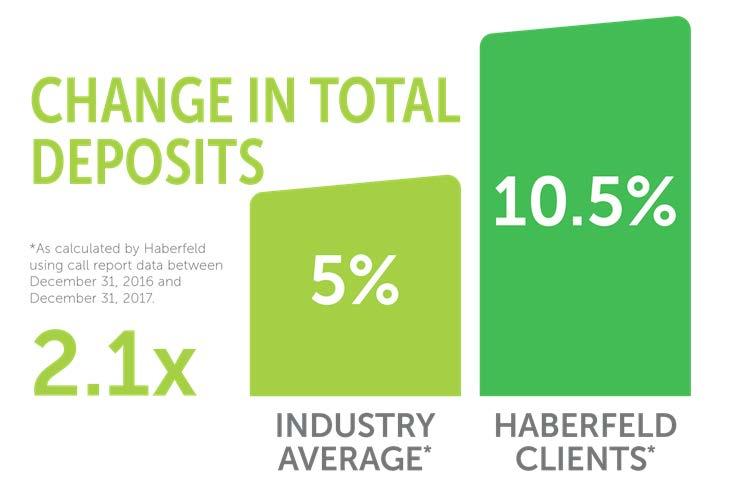
4 minute read
Myths vs. Facts

Shattered Myths of Banking By Achim Griesel, Haberfeld
Banking has more customer data than about any other industry. We know financial and personal information and how customers spend money. With data, we can understand behavior patterns for millions of people.
As bankers, we go to conferences and look for the next silver bullet, but ignore what happens in our own customer base. We love buzz words, and talk about Big Data, machine learning, and AI, but base our conclusions on personal opinions or small surveys while we have access to data, actual transactions, and behavior patterns for millions.
To disregard this verifiable data in favor of notions we think we understand eventually allows myths, like the five below, a place in decision-making. That can be detrimental to a community financial institution. How do you spot these myths and what should you do? Read on.
To attract younger customers, you need a balanced acquisition strategy and good solutions in-branch and online. It’s true for delivery as well as marketing channels.

MYTH #1: For Millennials and Gen Z, digital is the only thing that matters A Celent study recently posted to The Financial Brand showed that Millennials and Generation Z adopted online and mobile banking at a higher rate than older customers, but had a clear preference for visiting branches for some transactions – just as much as the older segment. That seems to explain in part a recent analysis showing that, in the last five years, Google searches for physical bank locations doubled. To all generations, it seems, the branch is still essential.
Data from more than 2,500 branches of community-based financial institutions shows a multi-channel approach could attract about 10% more of the younger market segment than represented in a footprint.
Our belief is you can attract younger segments, and win their loyalty, with an omni-channel approach, a core relationship and low-cost deposit acquisition strategy and a simple desire to grow.

Value-added accounts that offer services for a fee may be a good solution for the 10-20% of customers willing to pay. If you push customers into this type of product, attrition increases and long-term fee revenue suffers. Attrition with these products can be as much as 3 times the average. You can offer services with associated fees, but it provides limited growth. For sustained growth, a better option is to expand your customer base.
MYTH #2: The Branch is Dead The branch isn’t dead nor have digital channels failed to meet customer’s expectations; customers simply want choices. According to the Celent study, customers prefer the branch for more complex relationship-based activities, but handle simple, more transaction based activities online. Overall, fewer than 10% of customers prefer only digital.
This is right in line with what we’ve discovered at Haberfeld. For 73% of customers, the first product is the checking account. Over the last few years we have tracked online and in-branch opening stats at more than 300 community FI branches. In this sample of more than 500,000 core relationships, at institutions allowing account openings online, 95% of new relationships were started in branch. Channels as well as choices are important!
MYTH #3: To gain core deposits, you need to offer a higher rate Higher rates get more deposits, but is that the best way to grow? Attracting rate-sensitive customers is a risky approach in today’s risingrate environment. Data from community based financial institutions representing more than 2,500 branches in the U.S. shows you can grow core deposits even without a rate. Few of these 2,500 branches offered an above market rate, yet grew core deposits at twice the industry pace. The key to sustainable core deposit growth, for core relationships as well as time deposit money, is a balanced strategy that includes a good sales process.
MYTH #4: Increasing fees does increase fee income There are several ways to increase your noninterest income, but raising or implementing fees is the least sustainable. It leads to higher attrition, fewer customers and less fee income.

MYTH #5: We can focus on the Business Segment only There are quite a few mid- to large-size banks focusing only on business customers. The reason: a business relationship is four times more profitable than a consumer. But, when we analyzed about 500,000 business relationships, we found some interesting correlations: • For 55% of businesses, the checking account is the product initiating the relationship • For 31% of business customers, the consumer account was the first relationship with the FI.
That means one third of all business accounts come from a consumer relationship. So, if a community FI only chases business customers, it’s limiting profitability. This may work for large FIs, with thousands of customers per branch, but not community FIs with branch capacity to spare.
Today, customer experience and convenience is defined differently. As an industry, we need more to earn trust and build relationships. The branch is one channel, but we need to serve customers well in all channels. An omni-channel approach in delivery as well as our marketing is key to our long-term growth and success.
About the author: Achim Griesel is president at Haberfeld, a data-driven consulting firm specializing in core relationships, customer, and profitability growth for community-based financial institutions. Griesel can be reached at agriesel@haberfeld.com or 402-323-3793. IBA Associate Member


